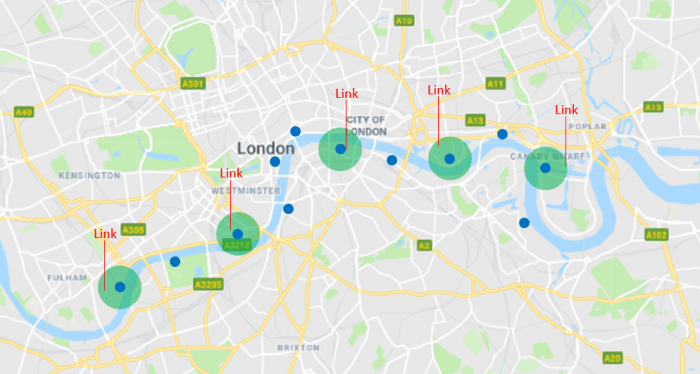Building a strong backlink profile is key to winning in today’s search marketing game. Backlinks are the foundation behind your organic rankings and help drive your most relevant web pages to the top of the search results.
Google may have made it more difficult to obtain backlinks, but this has made them even more valuable. What really sparks my interest is how marketers have changed their techniques in order to keep up with the competition.
A clearer understanding of the bigger picture makes you realise two things, not only is it important to build new natural links to your site, but it’s also equally as important to keep those links in a high-quality condition.
I’m excited to share with you 7 simple techniques you can apply to your search strategy in order to build up a solid backlink profile.
1. Broken Links
When a page on your website gets removed, users find themselves redirected to an ‘Error: 404’ status page. This means that any external links that were originally pointing to that page will now be broken.
The problem this then creates is that any authority you were gaining from these links gets cut off from search engines. In order to fix this issue and gain back the authority that was lost, simply make a redirect to the next most relevant page.
For example, if a /contact URL has recently been updated to /contact-us you’ll want to use that as the new URL. The important thing to remember is that making the redirect internally will fix the problem, although to gain the maximum amount of link equity, you’ll need to ask webmasters to make the same changes externally.
Sometimes this can seem like a pointless effort next to your other high-priority tasks. However, if you’ve created a very strong piece of content that you know is being fuelled by links, it’s smart to focus your efforts and attention here first and foremost, in order to retain that ranking position.
Fortunately, ‘Ahref’ has an excellent tool for the job of fixing broken links. What’s more, the data is always fresh so you’ll be able to set up notifications every time a link goes down. Easy!
2. Brand Mentions
Looking for a valid reason to build links on other websites can be tough, which is why Brand Mentions is generally a great place to start. SEMRush holds the key ingredient for our next approach.
It’s likely that people are already talking about you, and by using the tools available, you can find domains that mention your brand without supplying a link back to your website. To do this, put your top Brand Terms into the crawler and see what results it returns.

Once you’ve gathered a strong list of sites that mention yours, reach out to those webmasters with a supporting link back to your site – they can use this as reference.
3. Finding a Connection
Looking for missing value is key in outreach, which is proven in this next strategy. One Link Building Campaign here at Coast started with a River Boat Service at the heart of London.
The client supplied a map of the River Thames, where customers could view when & where their boat would stop before eventually continuing its journey along the river.
Using this Map, we marked each drop off location and gave them a unique “10-minute walk” radius zone. We then identified which local businesses fell within these zones and started to build a list of contacts.

We suggested that they could include our website in their contact page, as another form of transport to help tourists reach their establishments. The bottom line was that our boats would provide them with more customers, while we’d secure some very valuable links in return.
Looking at referral sources in analytics, we could then see how our new links made a direct impact on sessions and sales – talk about a win-win!
4. Skyscraper Technique
It’s important to remember that shiny, newly researched, optimised content can add a lot of value to your website – and the Skyscraper Technique makes clever use of this.

This part of the process can be time consuming, but handy tools such as https://answerthepublic.com/ will shoot out some quick & interesting ideas.
With these questions in mind, dig around the search results pages to see if people have already created relevant content in response. Then have a read through the content to spot any information gaps that you could potentially fill.
Once you have a strong list of examples, the aim is now to create a better version of all that content.
As I mentioned, try to fill in the missing gaps or build on what’s already there – purposeful content should fill a user’s need or solve an issue they might be having. When they ask the question, the content should provide the best and most relevant answer.
Once you’re happy will the new and improved content, outreach to all of the sites that link to the original pieces of content and suggest that they update the link with your version.
Another way of providing missing value is to find old content that can be updated with new stats. If webmasters realise their facts are wrong, you’ve supplied a great piece of content that will correct their problem. If you can find at least one fault in the original content, you’re onto a winning campaign.
5. No-Follow Targeting
The majority of websites backlink profiles fall within the 70-80% ‘Do-follow’ percentage. These links pass authority from one site to another, however the other 20-30% do not have a direct impact on rankings, so it might be worth seeing whether these changed.
Dig around your profile and see if there are any external domains that aren’t currently passing authority into your site. These will have ‘No-Follow’ attribute tags within the code.

(You might find the same issue with some internal links on your website, which is great because you can change these yourself!)
6. HTTP to HTTPS
Ever since Google stressed the importance of securing your site with a HTTPS domain, making sure that all of your links follow the same standard becomes just as important.
If you’ve recently had HTTPS certificates implemented, all external links pointing to your site will still direct users to the HTTP version of that page and get redirected to the HTTPS version.
It’s not a huge issue, but if you have to redirect that page again then you’re going to form a redirect chain, which is not good for search engines or your links.
To reduce the chances of this happening, and increase link equity, remove the HTTP URL’s on external links and replace them with HTTPS versions. If you’re struggling for time, only target the links that point to your best content.
7. Toxic Backlinks
Cleaning your profile is just as important as building new links; as your website grows and produces new content, search engines are going to be crawling your site more frequently. You therefore need to ensure that there are no spammy, strangely placed links pointing to and from your site.
In order to pick up harmful signals, we recommend using trusted tools which use their own algorithm to detect them. This way, you can scan your links past hundreds of ranking factors to get a “Toxic Score”. Reviewing each domain manually to ensure it needs removing is also essential.
Once you’re confident with the list, contact the webmasters and request for the link to be removed. Stay professional and kindly explain the issue. Another way to reinforce your request is to look at the keywords that site is ranking for, this can sometimes be a clue as to its low-quality content.
If you have any questions on these methods or if you’d like to share a link building technique, feel free to get in touch or leave us a comment below and we’ll get back to you!
